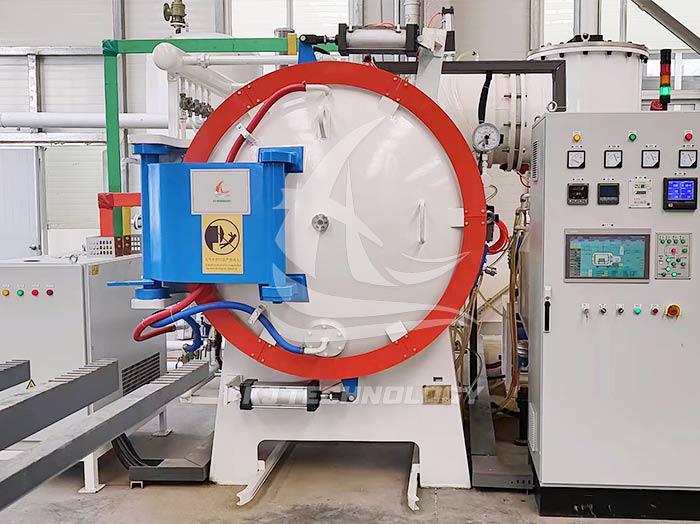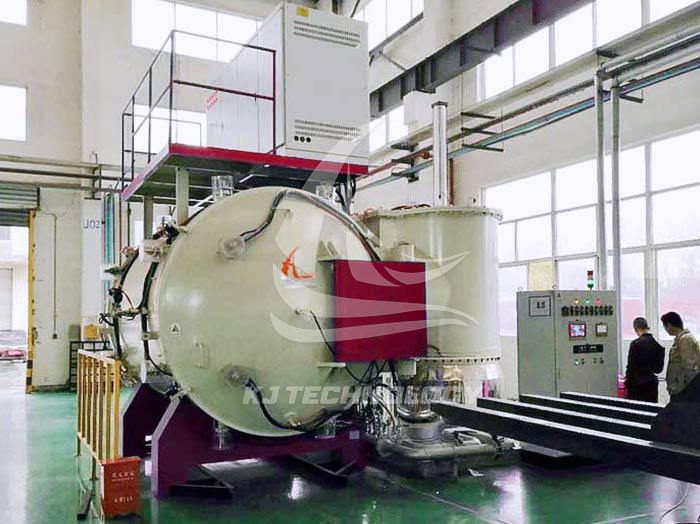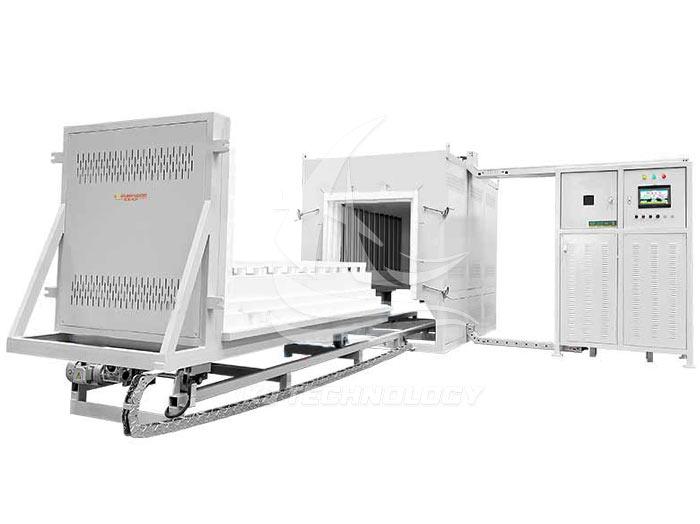Application of Nitrogen Atmosphere Vacuum Furnace in Powder Metallurgy Industry
 06-04-2025 Author: KJ technology
06-04-2025 Author: KJ technology
Nitrogen atmosphere vacuum furnace is widely used in the powder metallurgy industry, mainly reflected in material sintering, process optimization, product performance improvement, and equipment functional characteristics adaptation. The following is an introduction for you:
Material sintering
Hard alloy sintering: Nitrogen atmosphere vacuum furnace can be used for high-temperature sintering of hard alloys in vacuum or protective atmosphere, which helps to improve the performance and quality of hard alloys. During the sintering process, nitrogen serves as a protective atmosphere to prevent the oxidation of metal components in hard alloys, ensuring the purity and density of the sintered body, thereby improving the hardness, strength, and wear resistance of hard alloys.
Magnetic material sintering: In the sintering of magnetic materials, a nitrogen atmosphere vacuum furnace can provide a stable nitrogen protection environment to prevent the oxidation of magnetic materials at high temperatures, which affects their magnetic properties. By precisely controlling the sintering temperature, time, and nitrogen atmosphere, high-performance magnetic materials such as neodymium iron boron permanent magnet materials can be prepared to meet the demand for high-performance magnetic materials in industries such as electronics and motors.
Process optimization
Sintering protection: Using a nitrogen based atmosphere for sintering makes the surface oxidation degree of the workpiece easier to control. During the sintering process, the carbon content on the surface and central part of the sintered parts depends on the sintering gas atmosphere. By combining the zonal gas atmosphere with appropriate temperature and time, each stage of the sintering process can achieve high efficiency and economic goals.
Blowing and exhaust: In the process of carburizing, nitriding and other heat treatments, nitrogen is commonly used to blow and exhaust the furnace, and the sealing of the furnace door's air curtain cannot be separated from nitrogen. For example, in the discharge and waste disposal of magnetic materials, high-purity nitrogen gas has been widely used as a protective gas to prevent explosions caused by the mixing of hydrogen and air. The required purity of nitrogen gas is usually above 99.9995%, the atmospheric dew point of nitrogen gas is around -60 ℃, and the hydrogen content has low hydrogen requirements, generally below 5 × 10 ⁻.
Product performance improvement
Improving product density: Sintering in a nitrogen atmosphere vacuum furnace can reduce pores and impurities in the material and increase product density. For example, in the sintering process of powder metallurgy parts, a nitrogen atmosphere can prevent metal powder oxidation, promote diffusion and bonding between metal particles, make the sintered body denser, and thus improve the strength and hardness of the parts.
Improving the mechanical properties of powder metallurgy products: By performing specific heat treatment processes in a nitrogen atmosphere vacuum furnace, the mechanical properties of powder metallurgy products can be improved. If powder metallurgy gears are subjected to heat treatment under a nitrogen atmosphere, the surface hardness and wear resistance of the gears can be improved, while maintaining good toughness at the core and extending the service life of the gears.
Adaptation of device functional characteristics
Stable atmosphere: The nitrogen atmosphere vacuum furnace can provide a stable atmosphere environment for the sintering of powder metallurgy materials under the protection of an inert nitrogen atmosphere, preventing material oxidation and ensuring sintering quality.
Energy saving and efficient: This device has energy-saving features, and by precisely controlling the atmosphere and temperature, it can reduce energy consumption and lower production costs. Meanwhile, its efficient heat treatment process can shorten the production cycle and improve production efficiency.
Wide applicability: Widely used in sintering of hard alloys, magnetic materials, 3D printed metal parts, etc., it can meet the sintering needs of different powder metallurgy products and help users improve product density, strength, and consistency.








